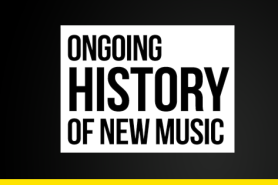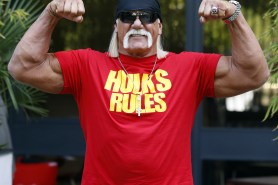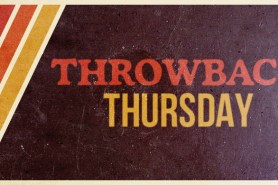Election day is less than three weeks away, and while many will cast a ballot that day, there are other options, including early voting.
Liberal Leader Mark Carney is campaigning against Conservative Leader Pierre Poilievre, NDP Leader Jagmeet Singh, Bloc Quebecois Leader Yves-Francois Blanchet and Green Party co-leader Jonathan Pednault for the chance to form government.
You can find a list of the promises the parties are making so far here.
Here’s everything you need to know about how to vote.
The election was called on March 23, with a voting day set for April 28, marking the shortest possible campaign that could be held.
While party leaders and candidates are fanning out nationwide to get your vote, you can actually cast your ballot right now, or with other early options.
When voting in person, regardless of the day or place, you will need to prove your identity, but there are three ways to do so.
A driver’s licence or any other card issued by the federal, provincial or local government that has your photo, name and current address is the first option.
If you choose to bring two pieces of ID, Elections Canada has a list of acceptable ID on its website.
Lastly, if none of the above options work, you can vote by declaring your identity and address in writing and having someone from your polling station vouch for you.
However, Elections Canada stresses that the person vouching must be able to prove their own identity and address, and they can only vouch for one person.
Most Canadian citizens 18 years and older are eligible to vote and, according to Elections Canada, are already in the National Register of Electors.
But if you want to make sure that you get a voter information card in the mail, you can check the online voter registration service, call 1-800-463-6868, or visit an Elections Canada office near you.
Just make sure to have an accepted form of identification and proof of address to do so.
If you’re not registered but are eligible to vote, you can register online or at one of the offices. Elections Canada also makes it easy to register when you go to your polling station to vote.
Registered voters will receive their voter information card by April 11, but if you haven’t received it by this time, you can contact the agency online or by phone.
“The easiest and best way for people to find out where, how and when they can vote is to visit our website,” a spokesperson for Elections Canada said.
“Our webpage has all of our important dates, the different ways electors can cast their vote, what they will need to vote and where they should go.”
Your voter information card will include the polling location and time.
It will also let you know about the accessibility of the polling station and how to request assistance in advance if needed, including for language and sign language.
If an update is required on the card, including your name, voters can contact their local Elections Canada office by 6 p.m. on April 22.
Elections Canada says having the voter information card and an accepted ID makes the voting process easier, but you don’t need to have it to vote as long as you are registered.
If your polling location changes after the voter information card is mailed out, Elections Canada will send out a new “replacement card.”
This will tell you your new polling location and can be used to vote, along with one piece of ID with your name.
Aside from election day, you can also cast a vote between April 18 until 21 — Easter weekend, for those that celebrate — during advanced polls.
Advanced polls will be open from 9 a.m. until 9 p.m. local time.
If you want to vote today, you can visit any Elections Canada office anywhere in the country and cast your vote by special ballot. This method will have you write the name of the candidate you are voting for before sealing it in an unmarked envelope and placing it in the ballot box at the office. The deadline to vote using this method is April 22 at 6 p.m. local.
The last option is voting by mail, a method the agency says may appeal to a student away from their home riding, a person living abroad, or if you won’t be in your riding for advanced polling or election day and don’t want to vote at an Elections Canada office.
However, Canadians who wish to vote by mail should apply before April 22 to do so to allow sufficient time to receive a voting kit, fill it out, and mail it back in the prepaid envelope.
That has to be received by 6 p.m. Eastern on April 28 if addressed to Ottawa’s office, or by the time polls close if addressed to your local office.
If you’re concerned your ballot may not make it in time to Elections Canada, you can also drop it off at your local office any time during the election until polls close on election day.
If you’re voting by mail from outside your riding, you will have to mail it. You can determine this by checking if the provided envelope in your voting kit is addressed to the special voting rules administrator. If it is, be sure to mail your vote as early as possible to ensure it reaches the intended destination on time.
Members of the Canadian Forces can also use any of these voting methods, or vote by special ballot at a military polling station from April 14 to 19, the agency noted.
Candidates for all 343 ridings were confirmed by parties as of Monday. Be sure to check online if you plan to vote by mail or at an Elections Canada office to ensure you know who the candidates are, as you will be writing their name instead of being provided with a list.
The Conservatives ousted five candidates in the past week, while the Liberals ousted one and another resigned. Both parties have since replaced the nominees in those ridings, so Canadians should be aware of the changes.
The ridings that saw changes for the Conservatives are New Westminster-Burnaby-Maillardville, Laurier-Sainte-Marie, Etobicoke North, Windsor-Tecumseh-Lakeshore and Richmond East-Steveston for the Conservatives, while the Liberals’ candidates in Markham-Unionville and Edmonton Gateway have changed.
Once election day comes, the votes will be counted in person.
“On polling day, paid election workers count votes in front of candidates, their representatives and other designated observers,” said a spokesperson for Elections Canada.
“Automatic ballot-counting machines have been successfully and securely used by election agencies in other jurisdictions, but Elections Canada does not use them.”
Ballots cast at the polls on election day are counted at those stations when polls close, while advance polls, special ballots cast in a person’s riding — like those who voted at an agency office, or mail-in ballots dropped off — will be counted at that office.
Mail-in special ballots cast outside a riding, plus votes cast by Canadian Armed Forces members and incarcerated Canadians, have their votes counted at Elections Canada’s Ottawa facility.
These ballots can also begin to be counted before Election Day if the volume of votes justifies it, the agency says, but won’t be shared until polls are closed.
Once all ballots are counted, returning officers validate the results that were counted on election day, typically in the first two to three days following, with final results posted online.
© 2025 Global News, a division of Corus Entertainment Inc.












 Ad Choices
Ad Choices